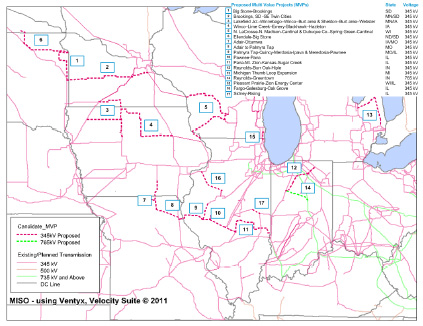Biennial Transmission Plan Reply Comments filed
March 15th, 2023
I must admit, I get so tired of over and over and over and over harping on the basic bottom line, that we DON’T NEED MORE TRANSMISSION. But oh well… here we go again. Just filed Reply Comments on the Biennial Transmission Report:
Once more with feeling:
2021 Biennial Transmission Report
Comments – Biennial Xmsn Report
November 11th, 2021

The Notice of Comment Period has been issued:
Here’s the plan to review:
2021 Biennial Xmsn Projects Report
Here’s the poop:

How to file comments? See below, and be sure to ask to be on the service list! If you want live links to make it easier, use link to Notice above.
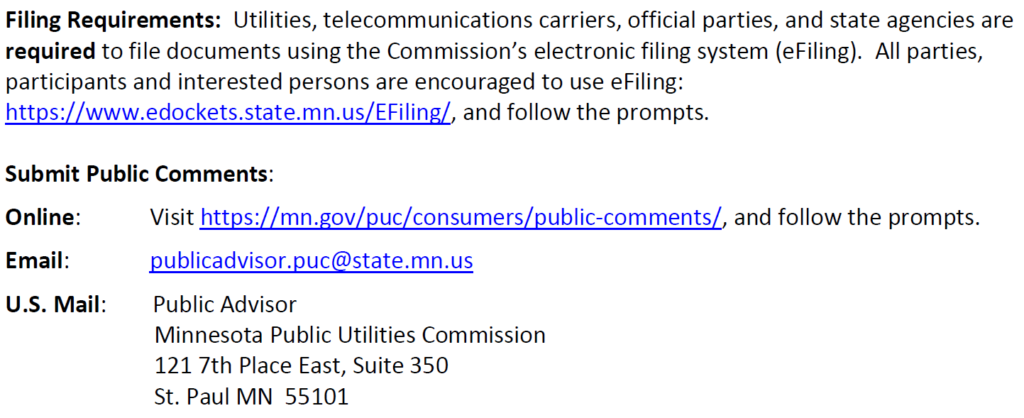
2021 Biennial Xmsn Projects Report
November 2nd, 2021

It’s that time of the year, errrrrr, it’s that time of every other year… time for the Minnesota Transmission Owners:
It’s filed in Minnesota Public Utilities Commission Docket M-21-111.
The Biennial Transmission Projects Report is required by statute, but there are no longer public meetings, and I must admit, I had pushed and promoted a lot initially, but ran out of time and energy for such a … ahem… waste of time. See Minn. Stat. §216B.2425 for how it’s supposed to go.
If history is any guide, it seems Initial Comments are about a month and a half out, mid-January, with Reply Comments another month and a half out, so mid-March. I’ll put it on the calendar and send a reminder around.
There’s nothing really exciting that I see, at first glance, but I did enjoy seeing the NERC Report excerpts. Last time they included the NERC Reliability as a separate filing, this time they included excerpts at the tail end of the report, above.
Here’s the full NERC Report — it comes out every year, and has a great assortment of important info, about reliability margins, load forecasts, and predictions of generation mix for energy and peak demand. I LOVE THE NERC REPORT!! Here’s the most recent ones — they used to come out in October, now it’s December:
NERC 2020 Long-Term Reliability Assessment
This is how reliability was defined in the transmission world decades ago, circa 1999 NERC Long-Term Reliability Assessment:

Keep in mind that now transmission is no longer about reliability — it’s about economics, so it’s a very different type of evaluation.
Who cares about the NERC Report? Over the decades, the NERC reports have looked at the various areas of the country, based on the grid’s organization, and it evaluates the system’s ability to provide electricity. What I like about it, though, is that the charts, graphs, circles, and arrows belie the party line, like all the talk about decreasing coal and fossil fuel generation, but look at projections for MISO:

Here’s the chart for MISO — the devil is in the details — look at the predominance of fossil fuel:

Remember how the utilities were blathering about the NEED for transmission, and that the transmission build-out would decrease need and reliance on reserve margin — at that time, MISO reserve margin was 15%.
They got their billions in transmission and we’re paying them way too much for it, and look at the reserve margin, the last line in that chart:
18%
Oh, well… I must have misunderstood… SNORT!
And yeah, the purpose of that big transmission build-out morphed into “IT’S FOR WIND!” yet remember, the CapX 2020 lines start at the coal plants and head east:
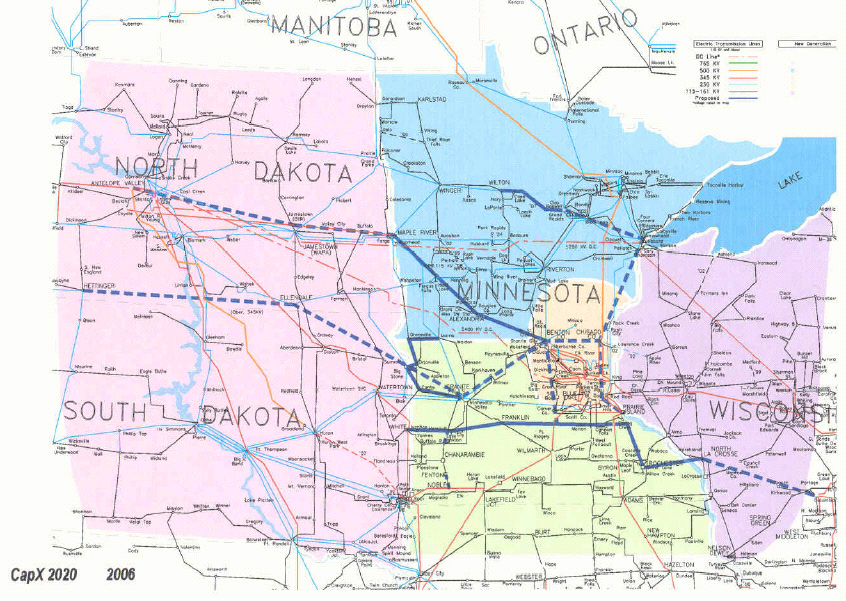
And the MISO MVP 17 Portfolio of projects supporting coal:
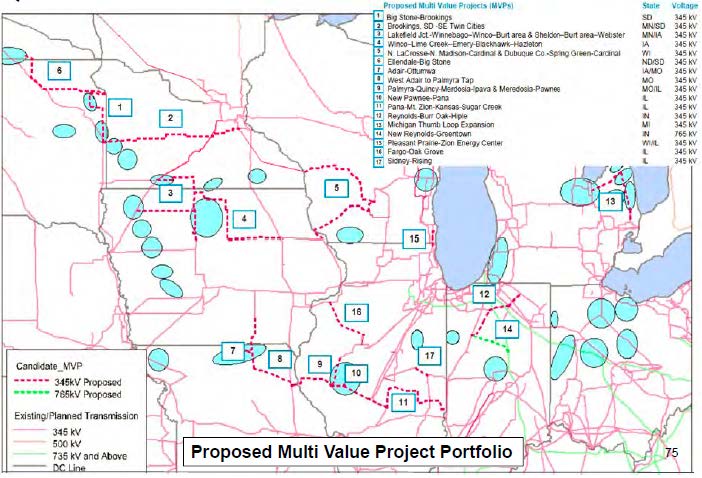
It’s exhausting, dizzying, seeing these scams spinning through, and yet here we go with “Grid North Partners.” Just NO!
Again, there will be opportunity for Initial and Reply Comments, expect Notice in a couple weeks, with Initial Comments probably due in mid-January. So later… in the meantime, look at the NERC report and compare with all the blather you’re hearing, particularly with COP26 in the works.
More transmission? They’re nuts!
August 19th, 2019

I saw this today and it’s nauseating.
First there was CapX 2020 transmission (following Arrowhead transmission, which was supposed to be the be-all and end-all of transmission)(and the SW MN 345kV line, precursor to CapX 2020. CapX transmission was based on a forecasted 2.49% increase in demand, which as we know, didn’t happen.

And there was the MISO 17 project MVP Portfolio:

Tomorrow, the Wisconsin Public Service Commission is making its decision regarding the Cardinal-Hickory Creek project, the southern part of #5 above, and the LAST of the MVP projects to go through state administrative approval.
So today, this is in the STrib:
Minnesota utilities will study if the $2B CapX2020 grid improvements were enough
By Mike Hughlett Star Tribune AUGUST 19, 2019 — 3:05PM

Photo: DAVID JOLESA utility worker assesses electrical power lines in south Minneapolis.
So that said, here’s Xcel Energy’s Integrated Resource Plan’s Appendix on transmission:Xcel IRP – Appendix I – Transmission & Distribution – from 20197-154051-03Download
The schedule for IRP hearings was just released, it’s in October, so there’s time to make time for it:
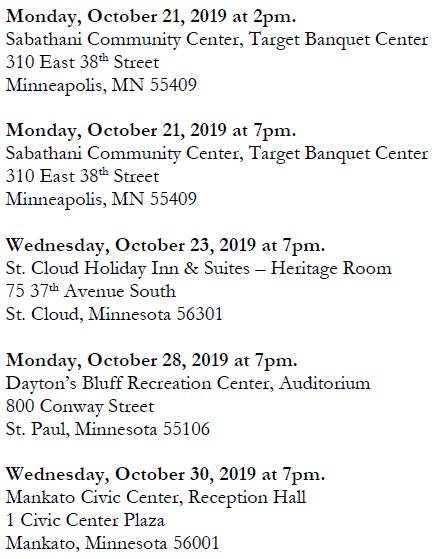
We know Xcel Energy gets a “handsome” rate of return for transmission capital expenditures (hence “CapX transmission), so of course they want to build more. The IRP is our time to tell them how they should get the electricity they need, whether their plans are making any sense.
How about shutting down some of those coal plants, and freeing up some capacity? How about siting solar on every rooftop, over every parking lot, putting the generation at load so we don’t need transmission? Oh, but wait, that makes too much sense, especially where a utility wants to keep control of the generation, and the expenditures, and rake in the dough.
Time to pay attention to the IRP. URP!
And MISO “approval” means exactly what?
December 9th, 2011
Here it is, MTEP 11, the Midwest Transmission Expansion Plan for 2011 (CLICK HERE, look on lower right), and it’s in the news too. The main report and some appendices:
MTEP 11 Appendix A-1_2_3 – Cost Allocation
Page listing all the Appendices
MTEP Appendix e52 Detailed Proposed MVP Portfolio Business Case
Please take note that this includes not only the CapX 2020 Brookings-Hampton line (#2 on map), but also the LaCrosse-Madison line (#5 on map), the one they need to build or they’ve got a lot of system instability goin’ on.
From my perspective, the most important thing to be aware of is that MTEP 11, and the MTEPs that preceded it, are about the shift to economic dispatch and development of the electric market. At the outset, MISO studied potential benefits of this shift, and found massive economic benefits, of which they speak in their press release. The economic benefits are realized by optimizing use of lower production cost generation, and in their own words, to “displace natural gas with coal.” Don’t believe it? Read this study that ICF did for MISO:
This is the worst possible result for those of us who breathe, and means that tens of thousands of landowners will have very high voltage transmission lines on their land, taken from them by eminent domain. These projects, almost all of the MTEP projects, are not about electric reliability, they’re “need” is to deliver market transactions of electric generation from any “point A” to any “point B,” and this is a private interest, a desire for market profits, and not a public interest.
Another issue looming is “what does MISO ‘approval’ mean?” Transmission lines are regulated by states, individually, and there is a movement to strip states of their regulatory authority and transfer that to federal entities. Look no further than Obama’s transmission “fast track” proposal, naming one of the CapX 2020 projects! States must make their energy regulatory decisions in an open, transparent process and based their decisions on ratepayer and public interest. That focus is not present in federal top-down edicts. States’ rights are at issue and we need to keep on our toes so this power shift doesn’t slide through.
And it’s not “just” the ICF report above, that’s it’s all about coal is clear from prior press. Here’s an important sentence, quoting GRE’s spin-guy Randy Fordice — explaining what we all know, that the MISO effort to get the “benefits” of displacing natural gas with coal:
Coal with benefits, yesiree… Gotta hand it to Fordice for being honest!


